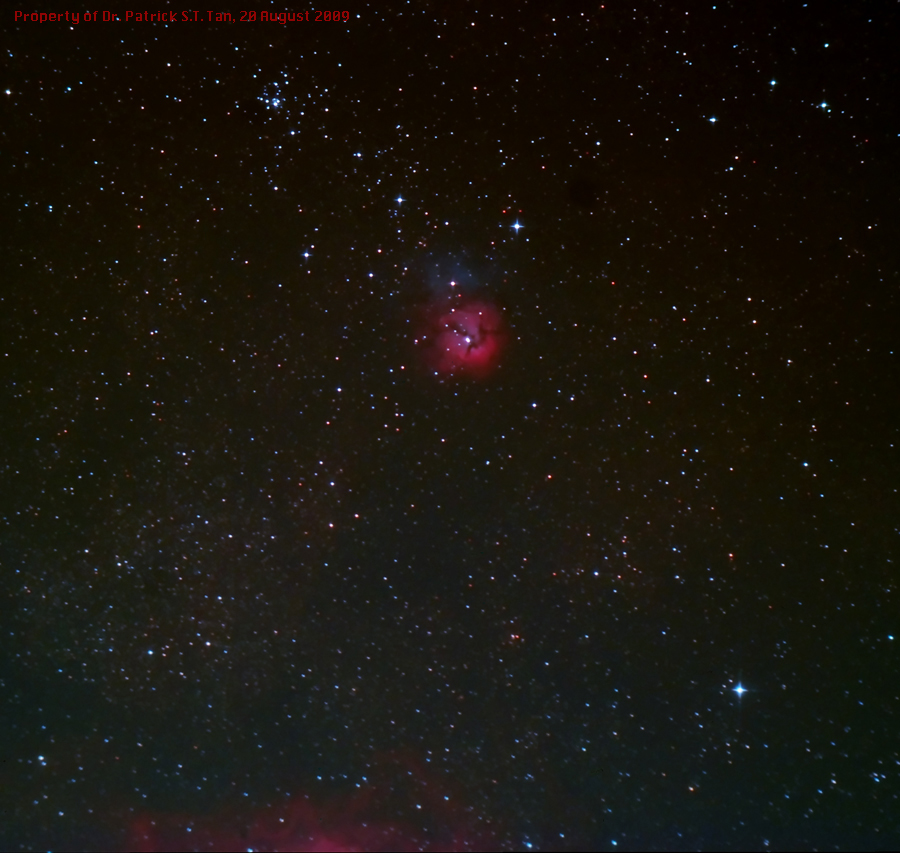
M20: Trifid Nebula
(M21 & M8)
Date: 20/08/09 Time: 2200hrs Location: Sunningwell Temperature: 16.4ºC Relative Humidity: 63%
Camera: Nikon D80 Scope: William Optics Z66 Apo Doublet at prime focus Mount: piggy-backed on Meade LX90 in equatorial mode Filter: Astronomik CLS (LPF broadband filter) Exposures: 9x5min ISO: 1600 F ratio: 5.9 Guidance: Autoguided
Located practically at our galactic centre (18hrs, 2min, 30sec RA; -23deg, 2sec Dec), the Trifid Nebula is relatively bright amidst a cloud of stars. I was very lucky to get this shot on a rare, clear Friday night with a relatively cloudless southern horizon, at barely 20 degrees elevation. This is so low as to be inaccessible to visual astronomers at my latitude, even with filters and large aperture scopes, but with a CCD and the appropriate LP filters, this is what you can get! With the low powered refractor and the large CCD chip of my Nikon, I was able to catch the northern edge of the Lagoon Nebula (galactic centre) M8, and the open cluster M21 to the north-east (above-left) of the Trifid. The Trifid Nebula consists of 3 types of nebula: the largest, red nebula is a hydrogen emission nebula fluorescing from the energy of the central star cluster, the blue northern cloud is a reflection nebula rather similar to the nebulosity surrounding the Pleiades (M45), and the divisions of the trifid are dark nebulae consisting of dusty non-energetic material which shields the emission nebula light in a silhouette similar to the Horsehead (B33) nebula.
Digital summation of 9 exposures for a cumulative exposure time of 45 minutes was carried out using MaximDL, light pollution haze removed by subtraction of the haze colour in Photoshop CS, followed by black and white point resetting and midtone enhancement. 1 pass of Noise Ninja at default settings completed the processing prior to cropping.